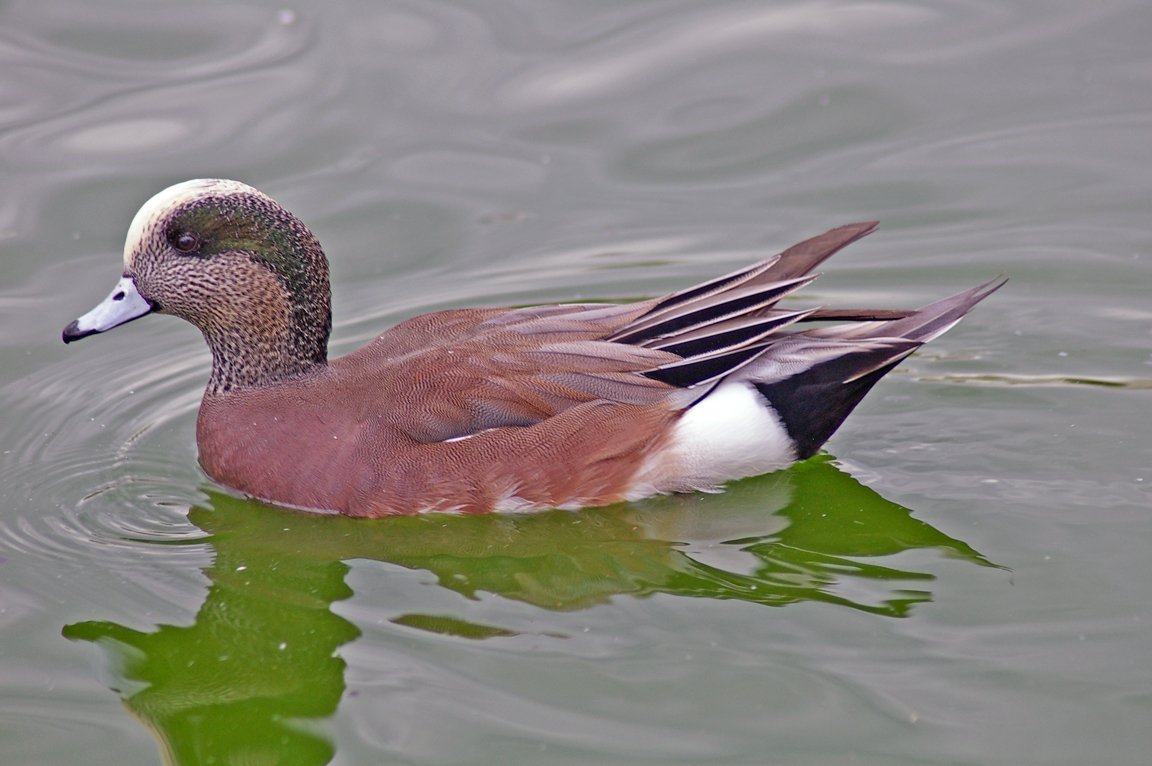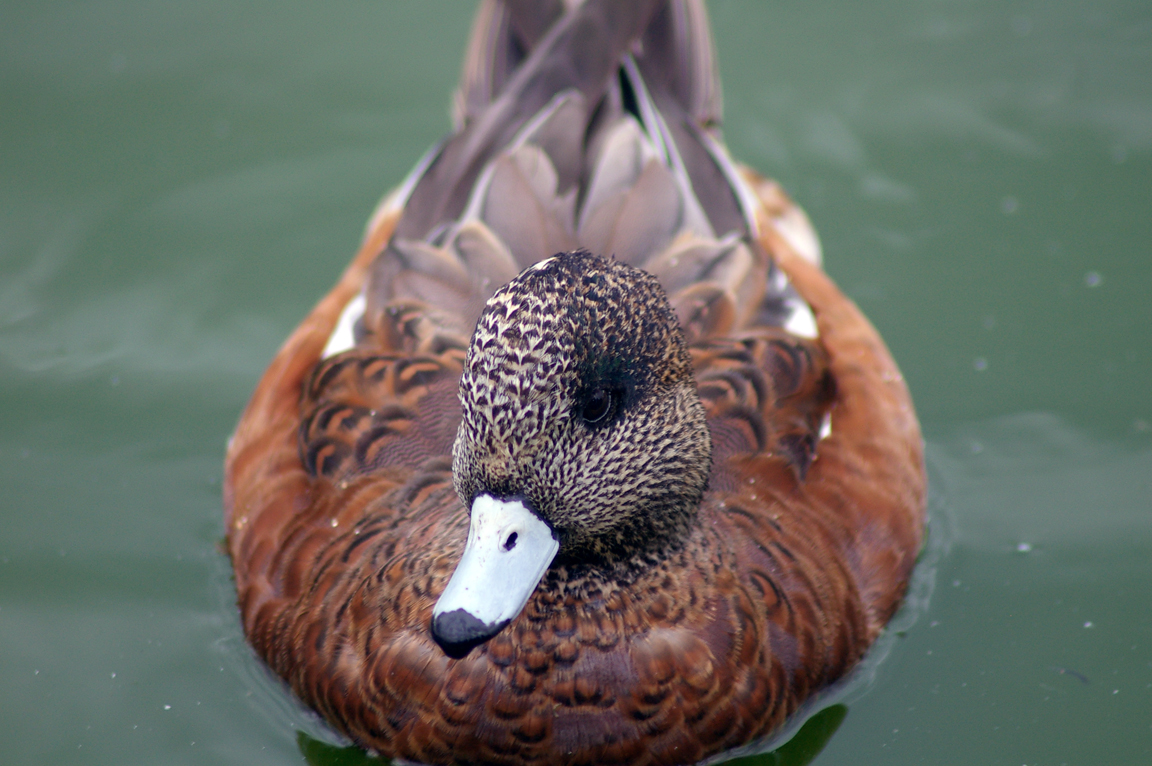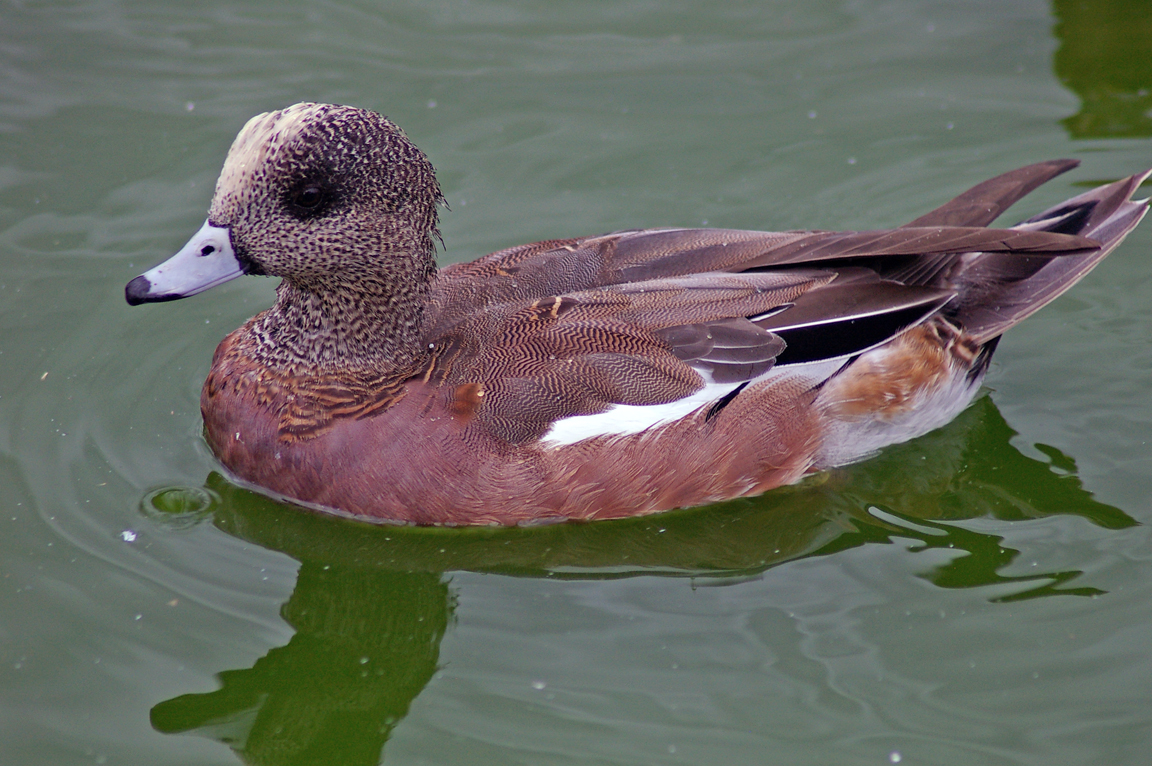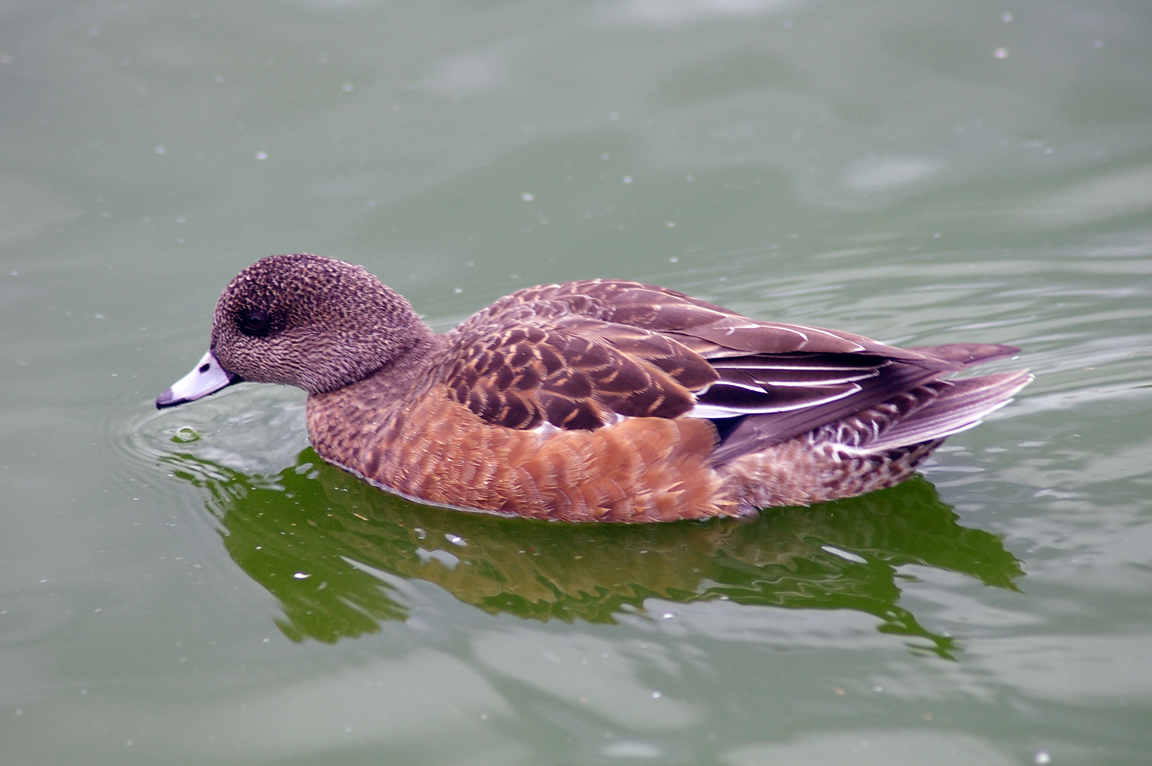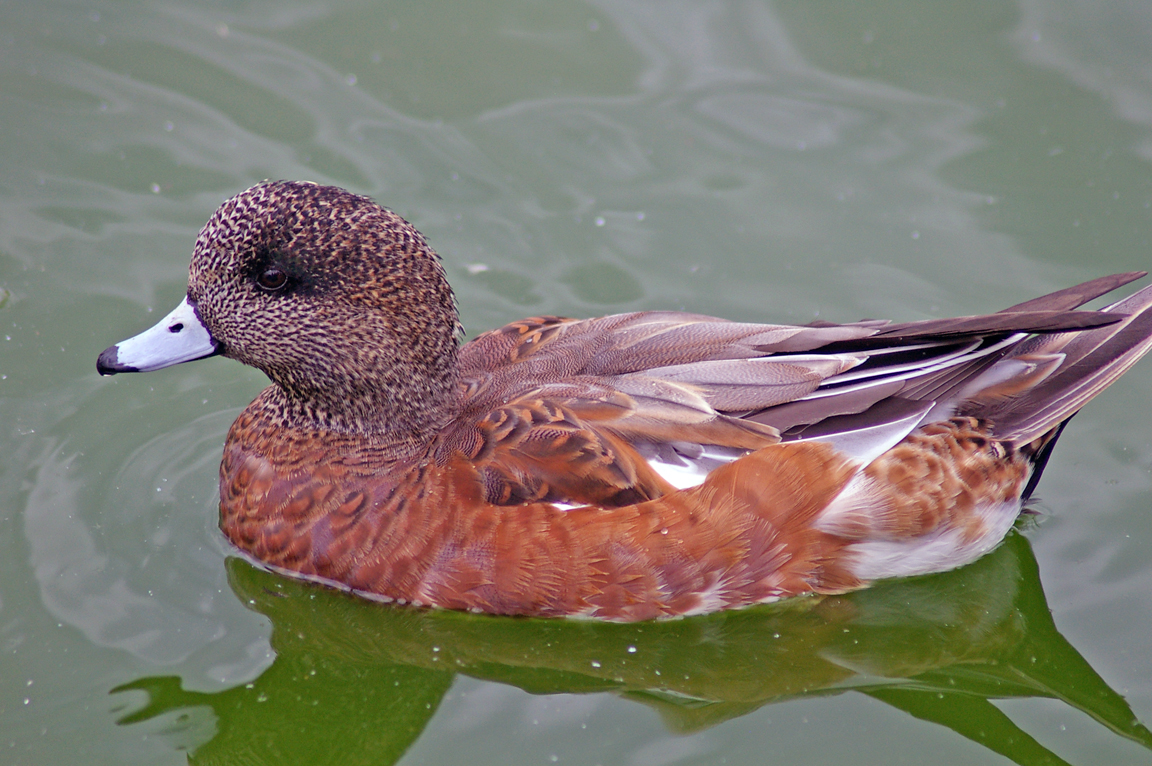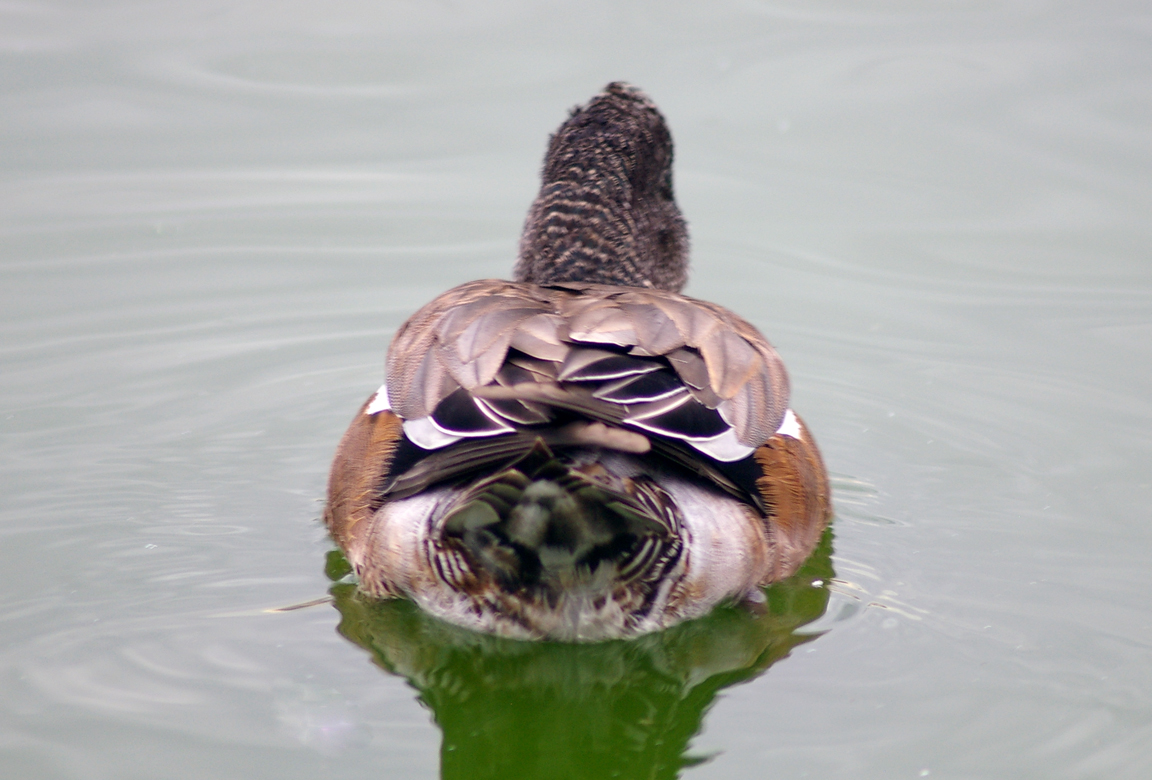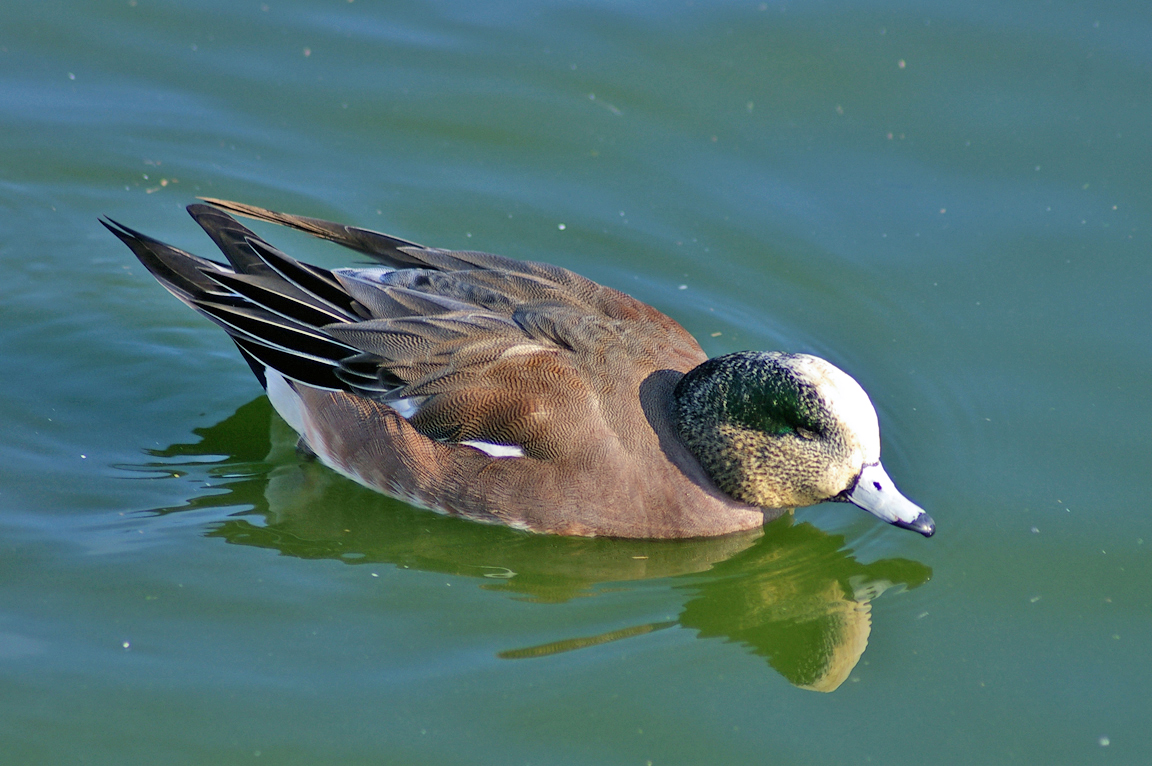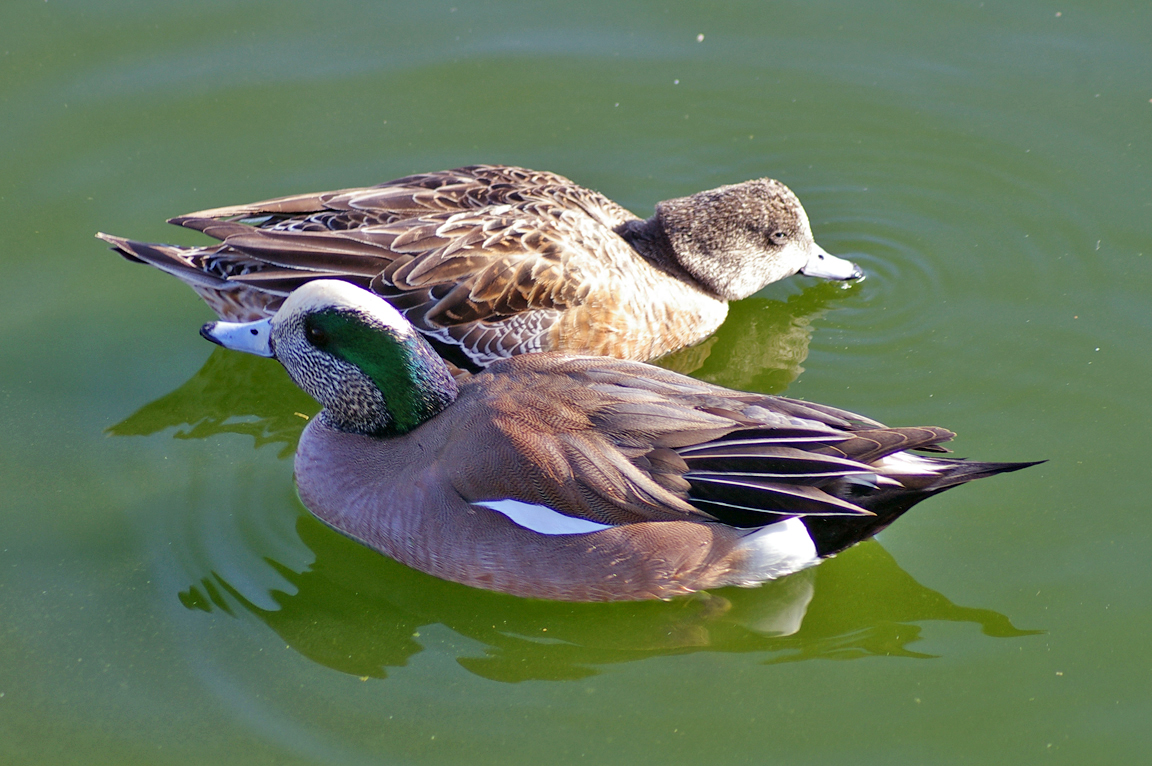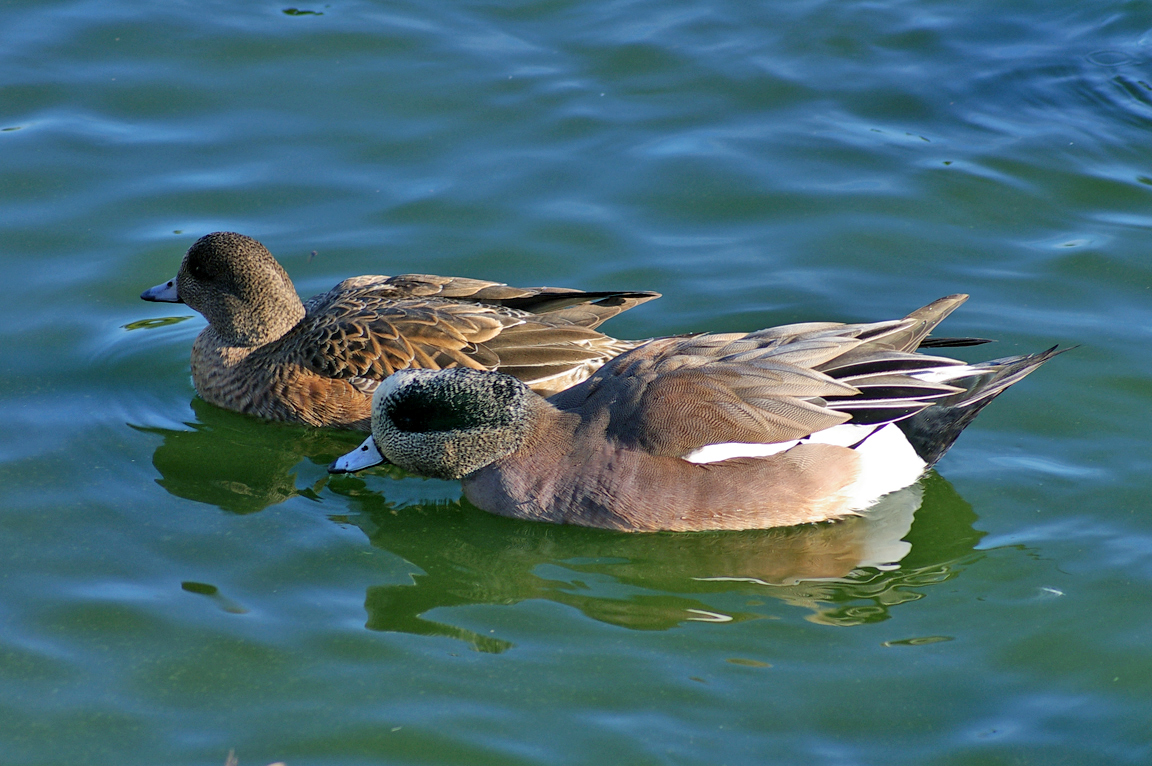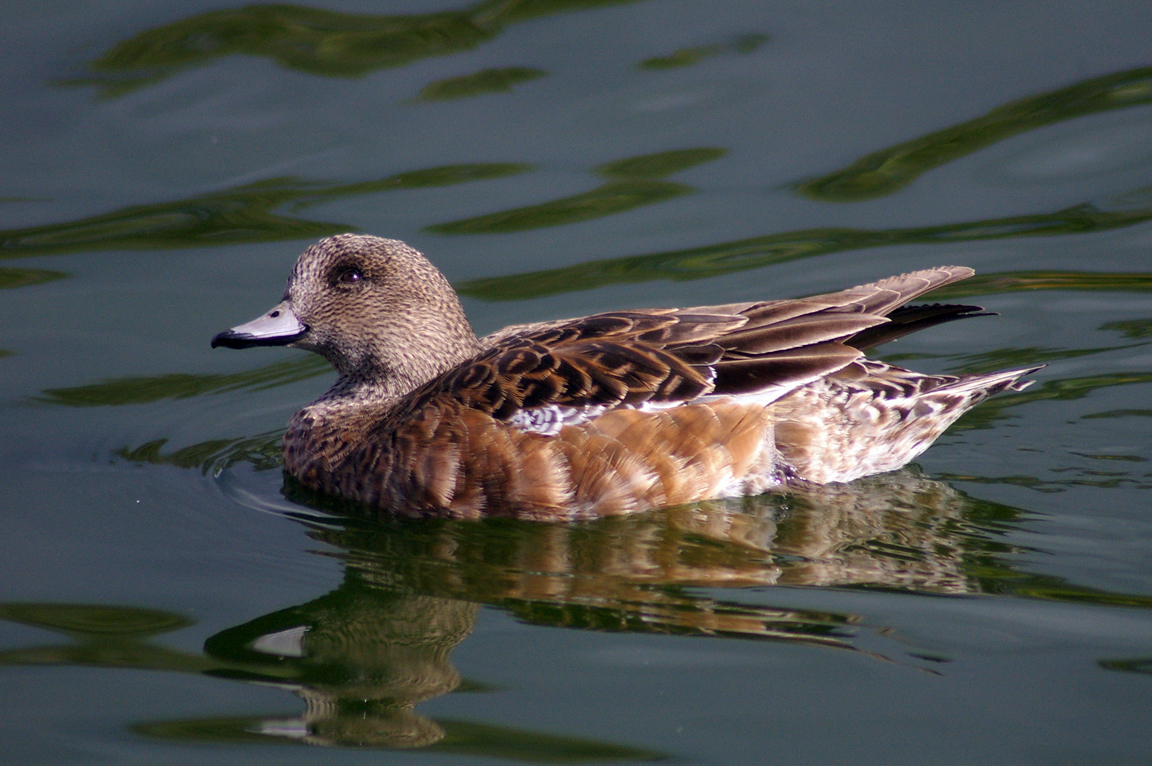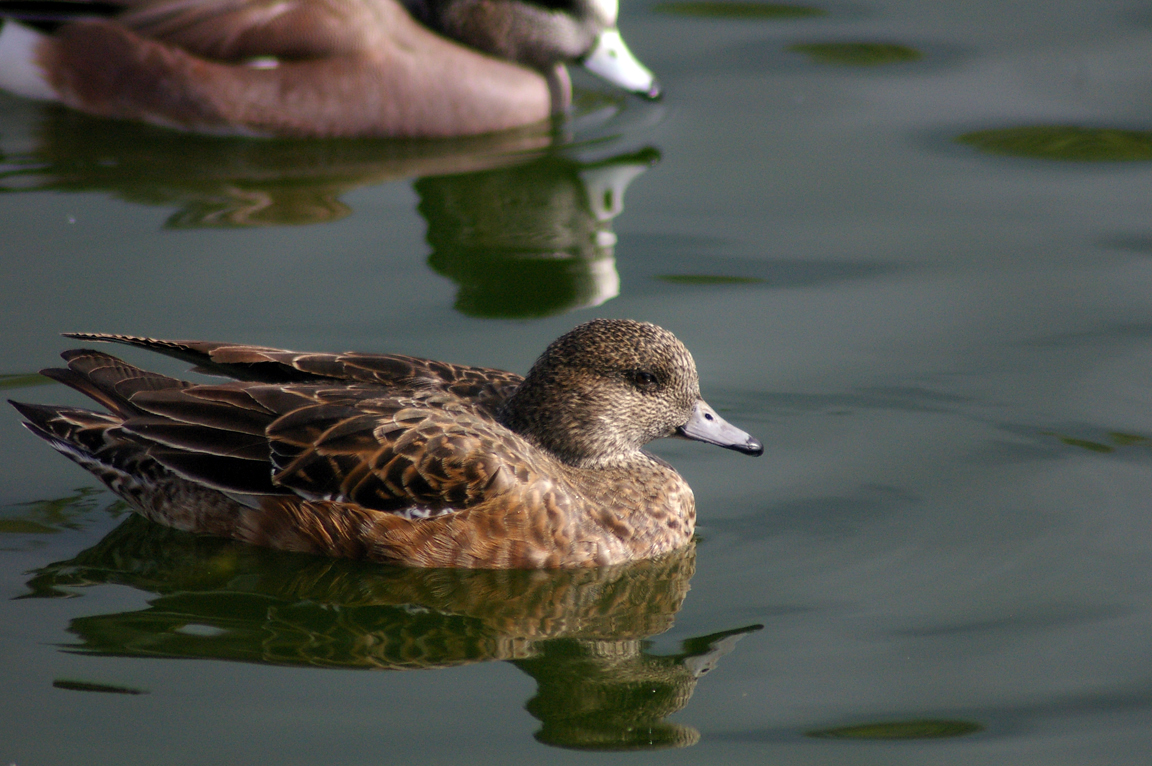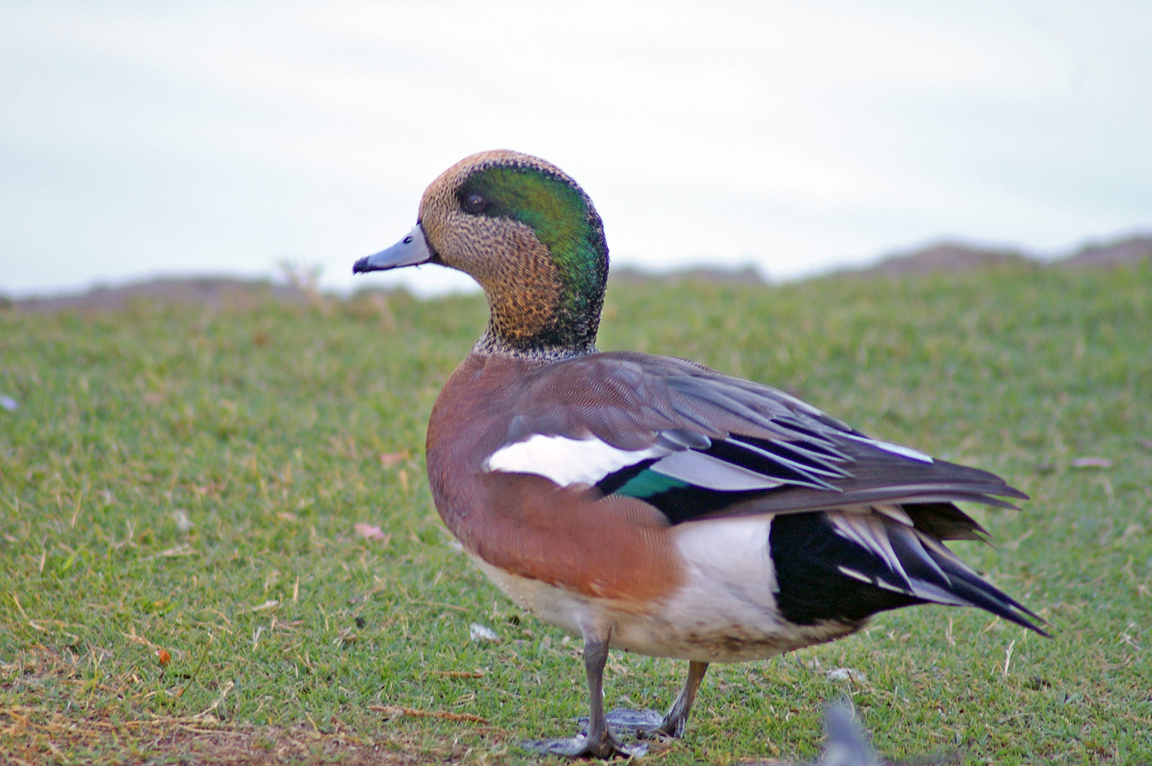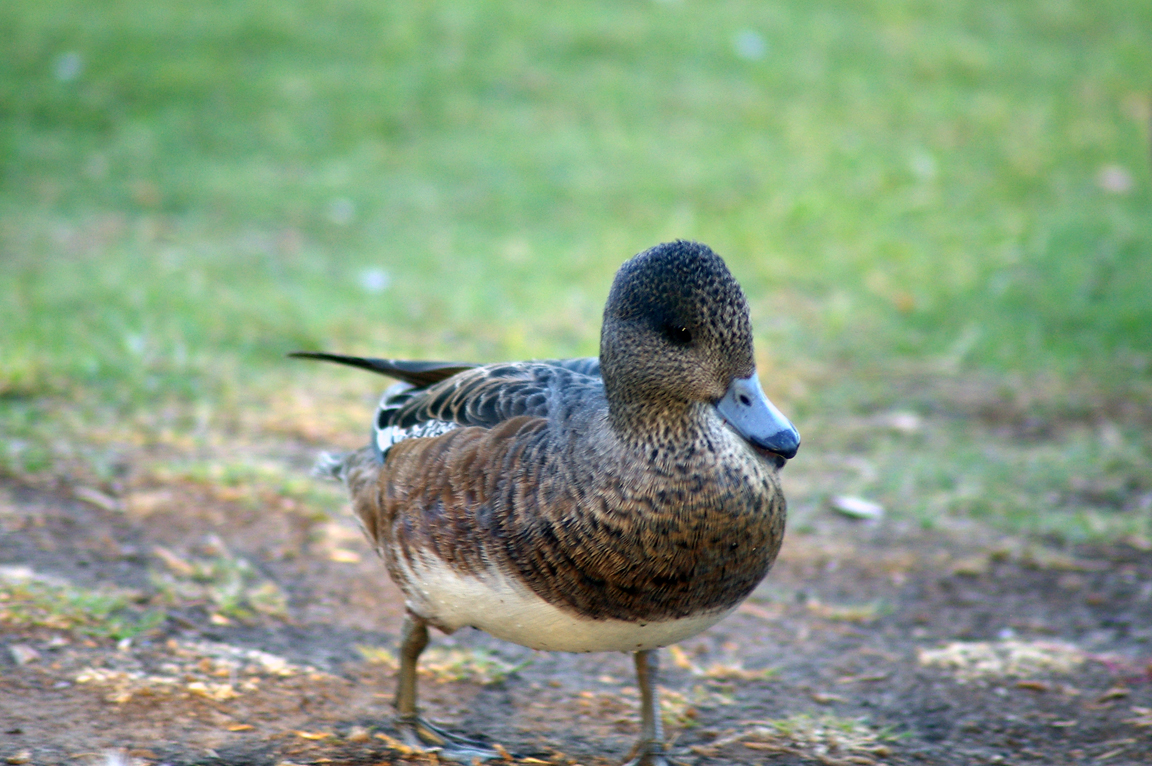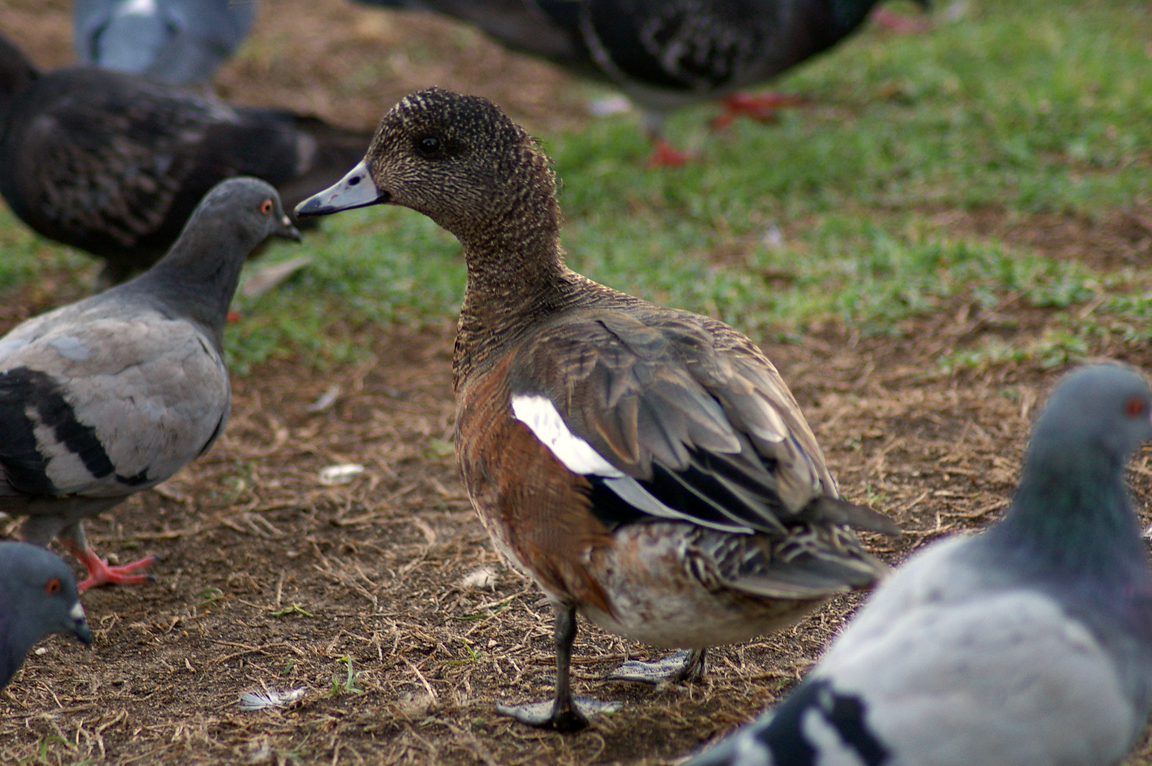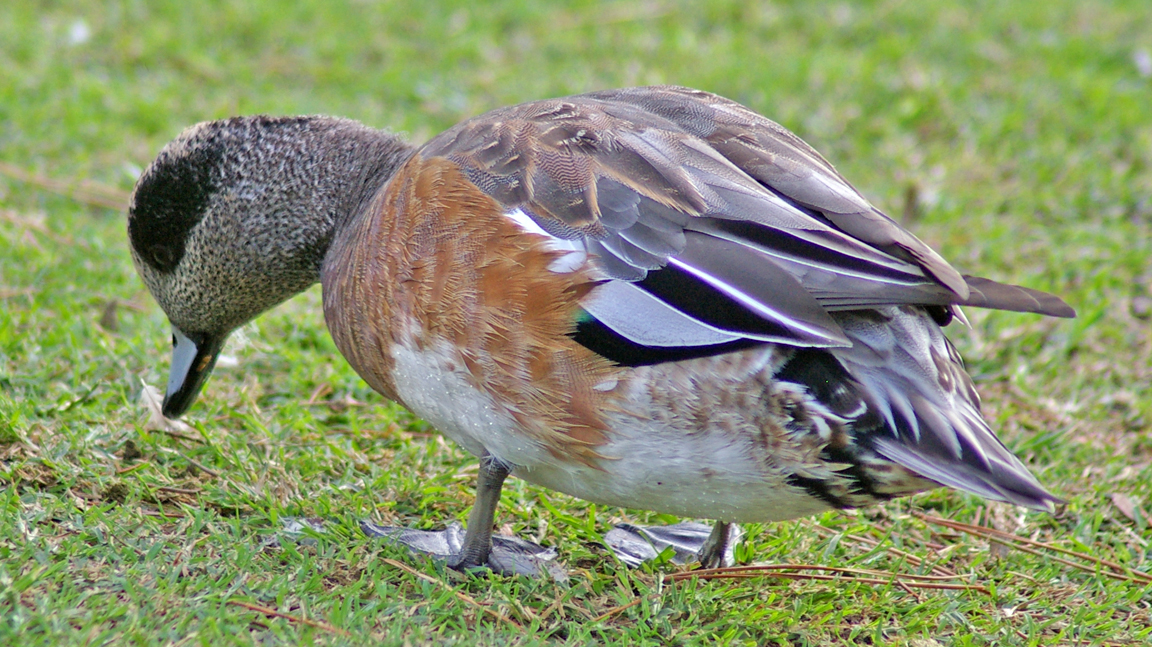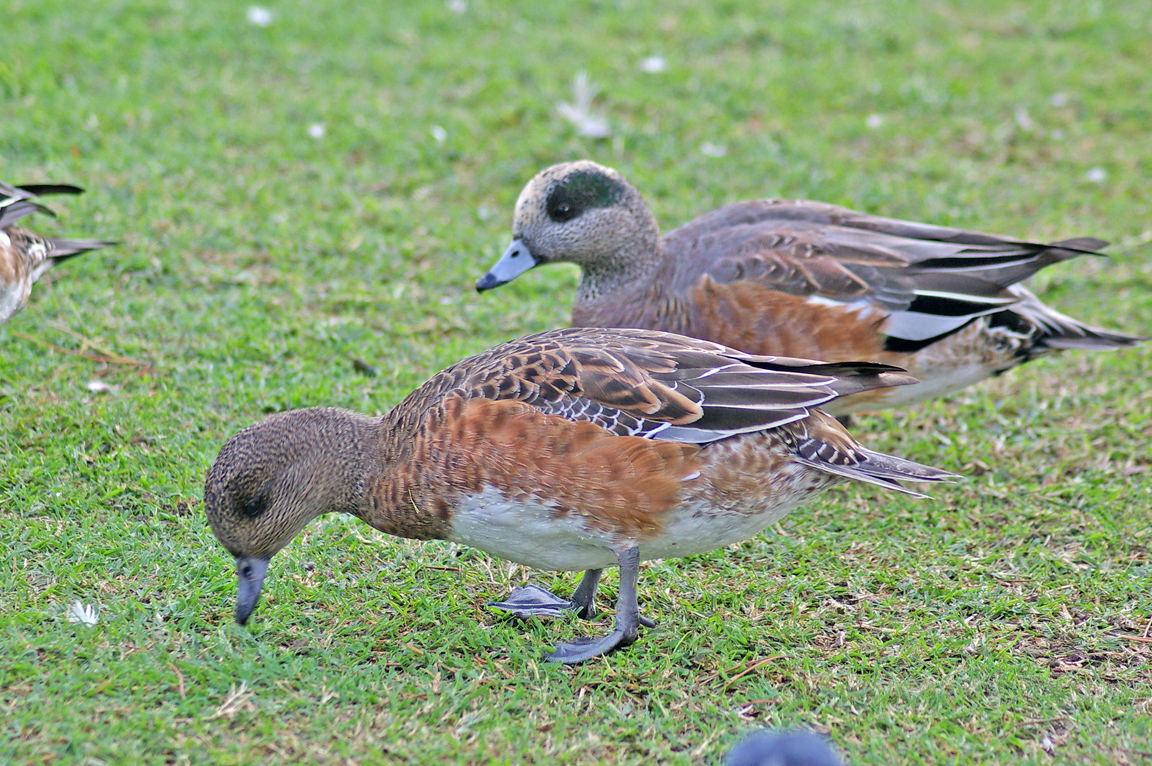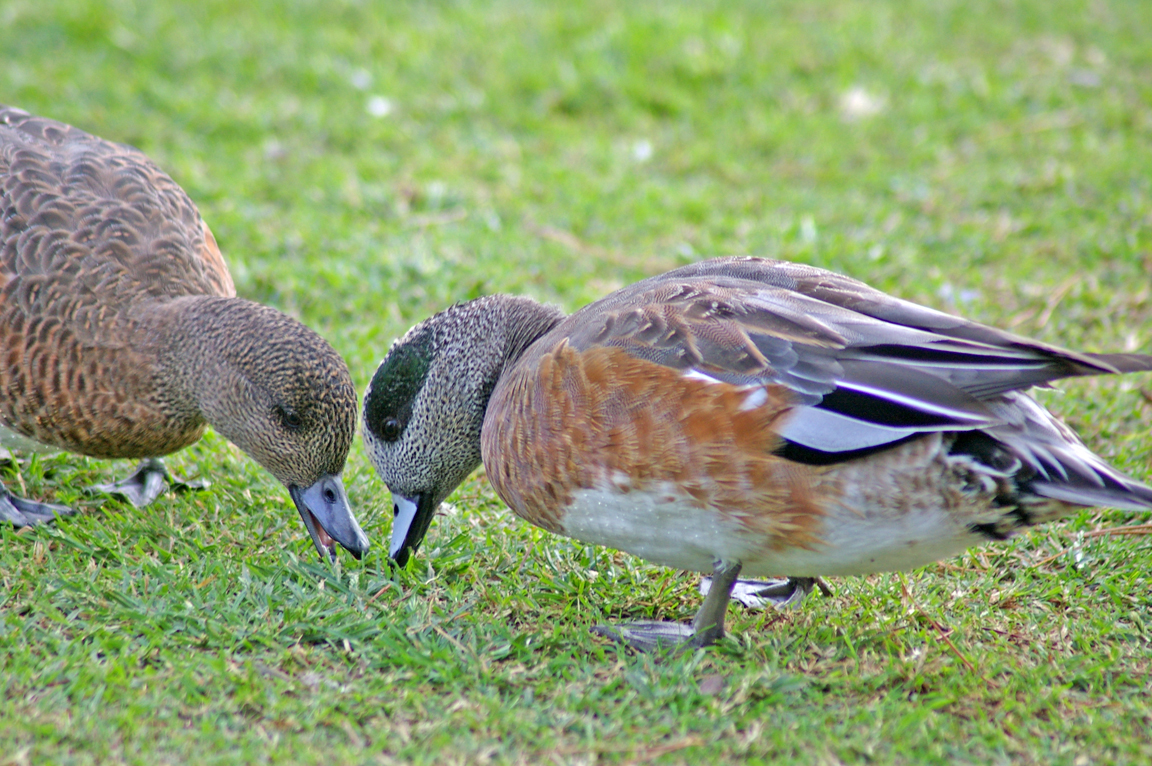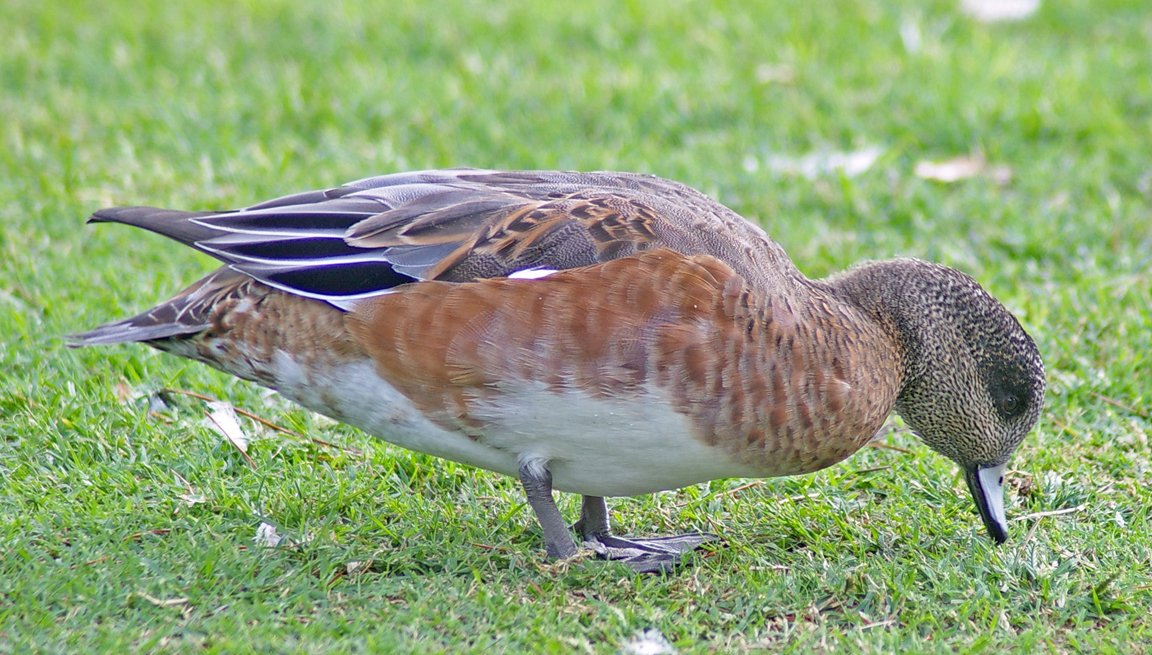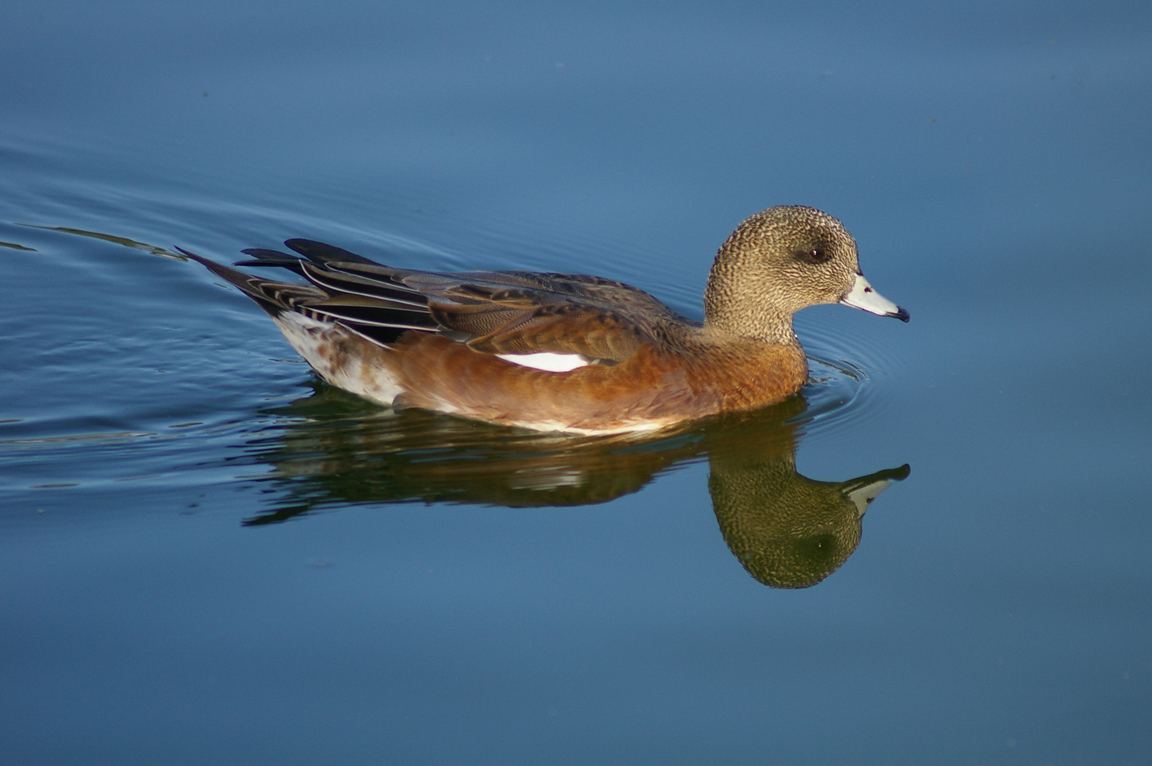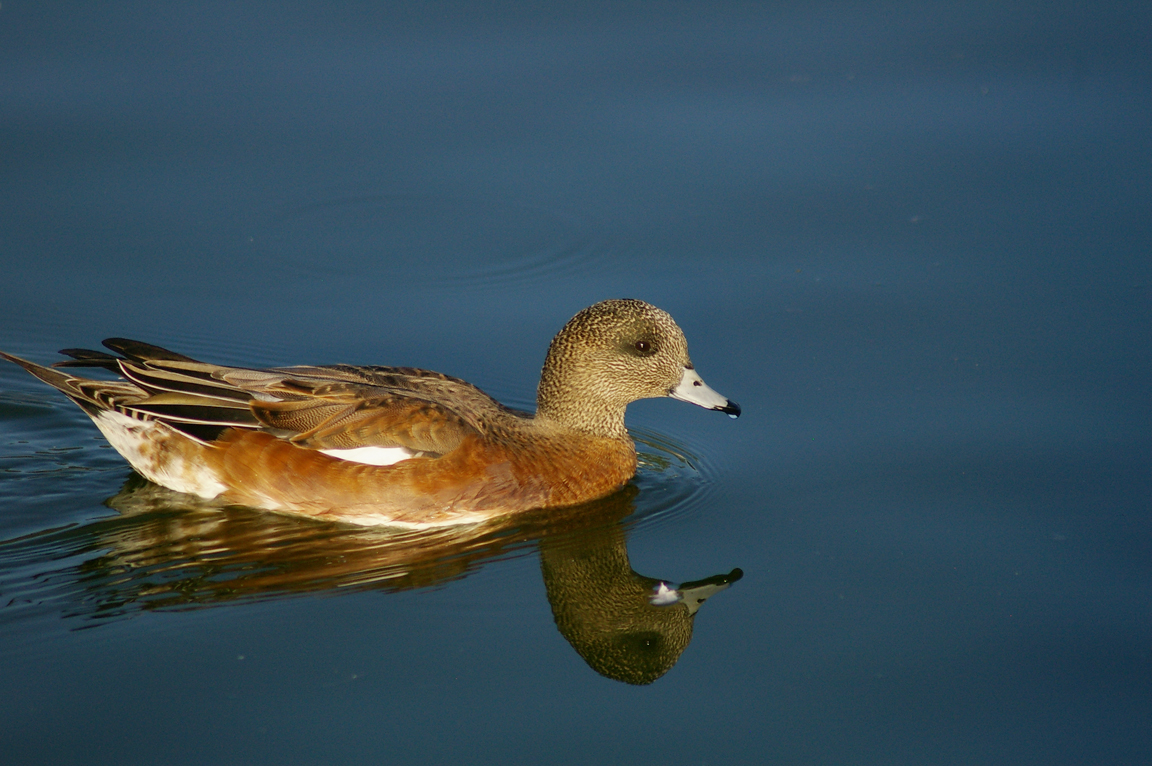|
|
|
 |
American Wigeon
|
| Anas americana | |
A common and increasingly abundant duck, the American Wigeon breeds in northwestern North America and is found throughout the rest of the continent in migration and in winter. Its small bill and the male's white forehead, as well as certain aspects of nesting and feeding behavior, distinguish this species from other dabbling ducks.
Interesting Information
-
The American Wigeon was formerly known as "Baldpate" because the white stripe resembled a bald man's head.
-
The American Wigeon is a rare, but regular straggler to Europe where it turns up in flocks of Eurasian Wigeon.
-
The American Wigeon's short bill enables it to exert more force at the bill tip than other dabbling ducks, thus permitting efficient dislodging and plucking of vegetation.
-
The America Wigeon is the dabbling duck most likely to leave water and graze on vegetation in fields. However, feeding in fields on grain, such as corn, is rather rare.
-
The American Wigeon's diet has a higher proportion of plant matter than the diet of any other dabbling duck.
Description
Adult Description
-
Size: 42-59 cm (17-23 in)
-
Wingspan: 84 cm (33 in)
-
Weight: 540-1330 g (19.06-46.95 ounces)
-
Medium-sized duck.
-
Male with white crown.
-
Green face patch.
-
Large white patch in wings.
-
Black rear end bordered by white.
Sex Differences
Male brightly patterned with white flanks and white crown stripe; female dull gray and rusty brown.
Female
Head appears grayish overall, with finely-blended white and dusky streaks. Breast and flanks are pale reddish-brown; mantle is grayish-brown with some buff barring. Bill is small and grayish, with a black tip.
Male
Breeding (Alternate) Plumage
White or cream-colored forehead and forecrown and broad dark-green patch extending from behind eye to nape. Bill is bluish-gray with black tip. Cheeks and chin grayish. Breast, sides, and back are pinkish-brown. Rear flanks show a white patch; undertail coverts are black.
Eclipse (Basic) Plumage
Variable amounts of white and green on head. Undertail coverts are variably black, with some white. In all plumages, male shows white patch on upper wing, and dark-green speculum.
Immature
Similar to adult female.
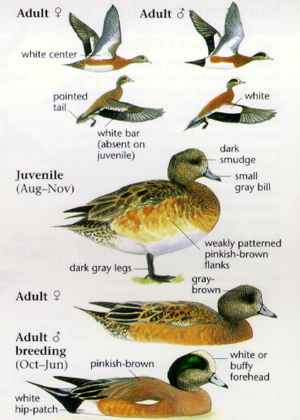
Photo taken from: The Sibley Field Guide by David Allen Sibley
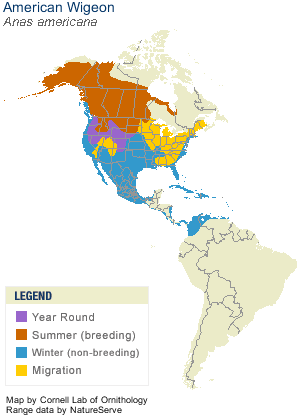
© 2003 Cornell Lab of Ornithology
|
Habitat |
|
Shallow freshwater wetlands, including ponds, marshes, and rivers. |
|
Behavior |
|
American Wigeon courtship displays include tail-wagging, head-turning, wing-flapping, and sudden jumps out of the water.Feeds on vegetation at and just below surface. Submerges head and tips tail up to reach plants under surface. |
|
Food |
|
Aquatic plants; some insects and mollusks during the breeding season. |
Taxonomy
| Kingdom: | Animalia |
| Phylum: | Chordata |
| Subphylum: | Vertebrata |
| Class: | Aves |
| Order: | Anseriformes |
| Family: | Anatidae |
| Subfamily: | Anserinae |
| Genus: | Anas |
| Species: | Anas americana |
Similar Species |
Eurasian Wigeon is closely related and very similar. Breeding male Eurasian Wigeon has dark rufous head and buffy forehead, with no green stripe, and grayish flanks and back. Female, eclipse male, and immature very difficult to distinguish; the best mark is the color of the axillaries ("armpits"), which are gray on Eurasian Wigeon and white on American Wigeon. |
|
Bird Sound |
|
High squeaky whistle, resembling squeaky toy. Female quacks. |
|
Eggs look like this |
|
Photo taken from: ARCTOS Collaborative Collection Management Solution |
Videos
American Wigeon 1
Non-breeding Male
American Wigeon 2
Breeding Males and Females
American Wigeon 3
Breeding Males and Females, Non-breeding Juvenile
